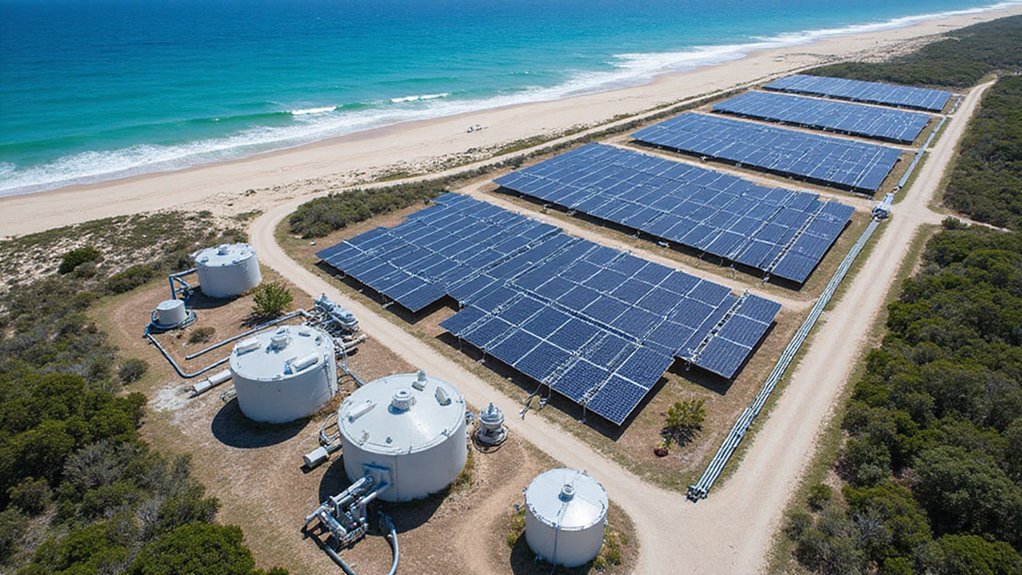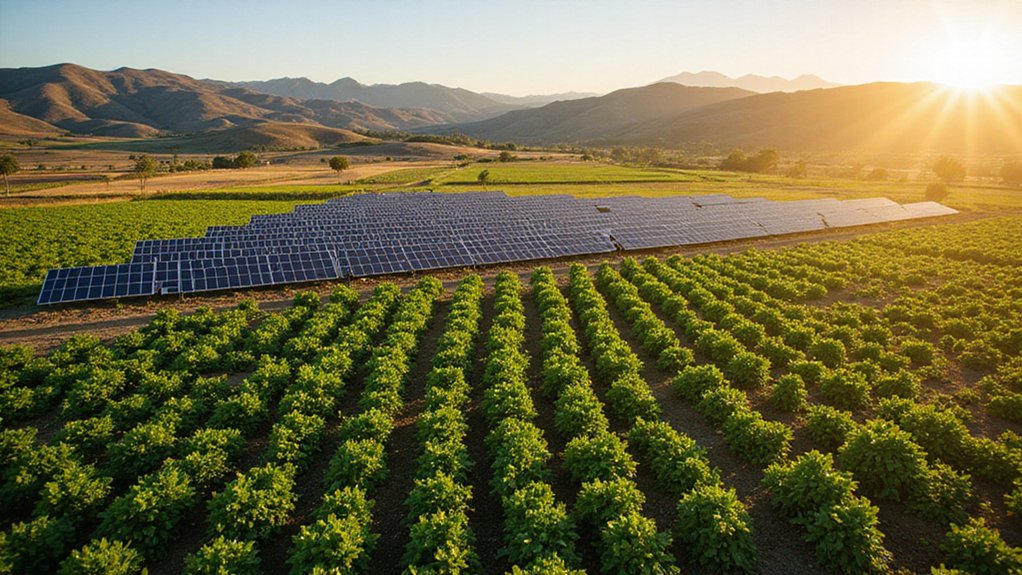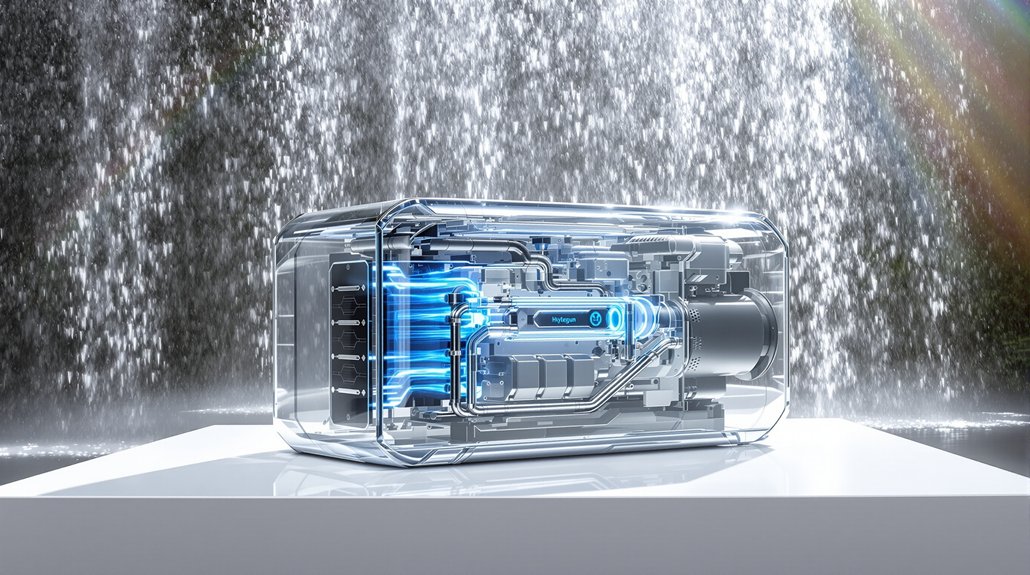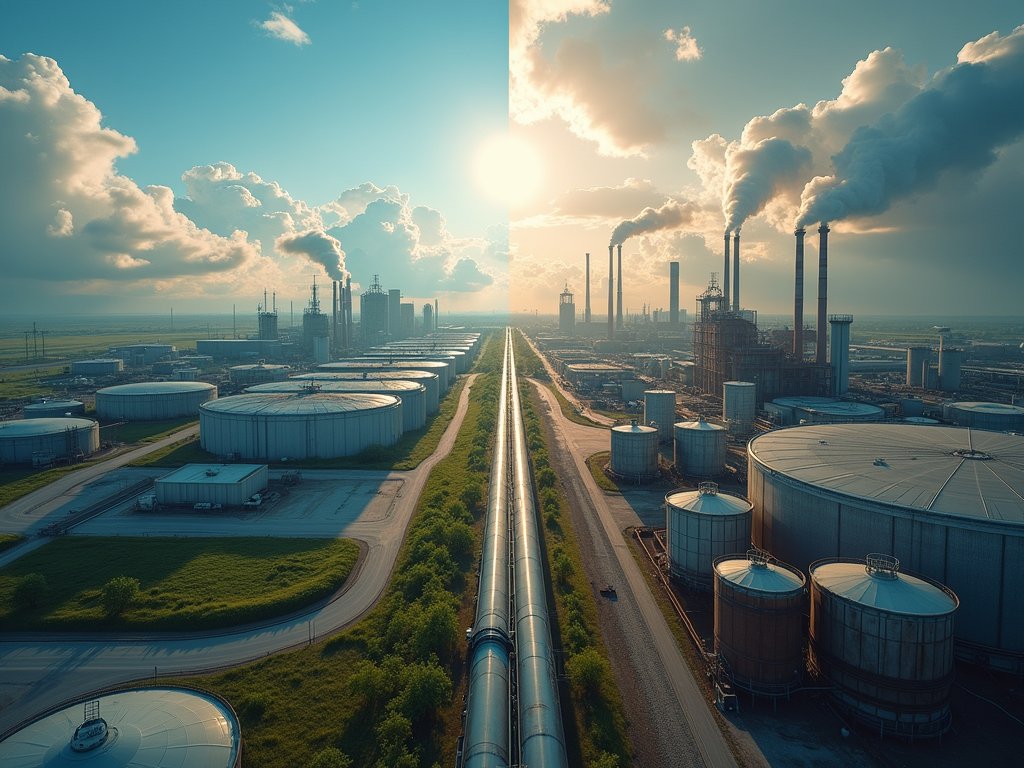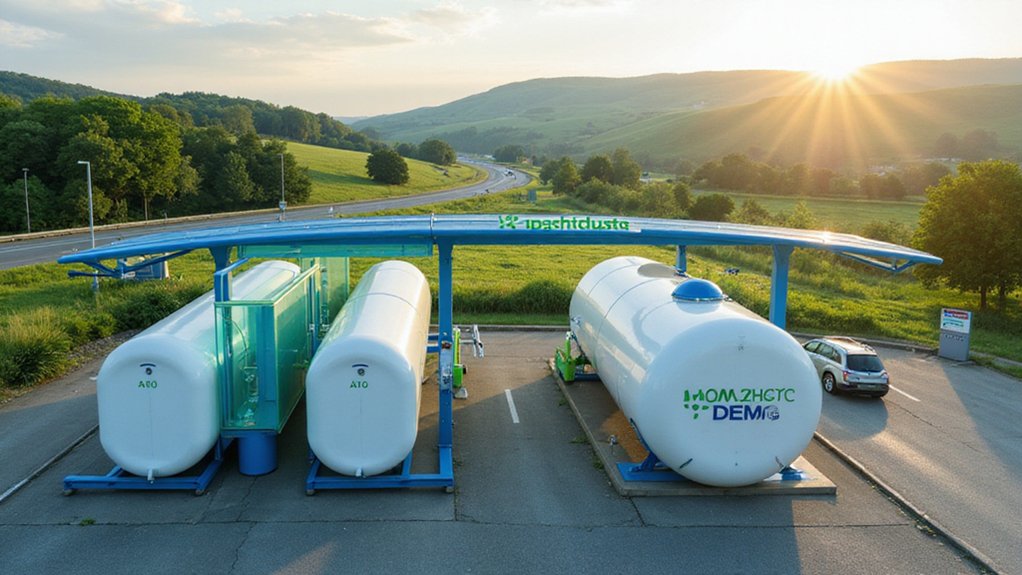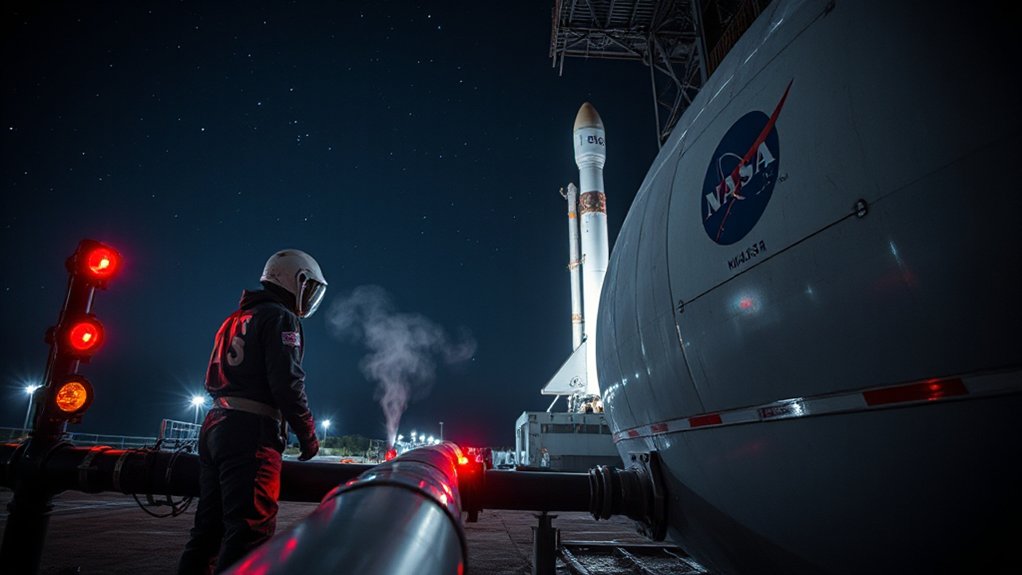Queensland’s H2Xport pilot plant transforms seawater and non-drinkable water into hydrogen using solar power. Located 30 km southeast of Brisbane, the $7.5 million facility recently won the 2025 Smart Energy Excellence Award. The plant operates as a 50 kW hybrid renewable system featuring three solar technologies, multiple battery types, and two electrolyser technologies. This innovative project demonstrates how renewable energy can create clean fuel from previously valueless resources.
Queensland is turning ocean water into clean energy at an award-winning pilot plant that harnesses the power of the sun. The H2Xport pilot plant, located at QUT Redlands Research Facility about 30 kilometers southeast of Brisbane, uses solar energy, battery storage and a microgrid to produce hydrogen from seawater and non-drinkable water. The innovative project received the 2025 Smart Energy Excellence Award in the Zero Carbon Hydrogen category in April 2025.
Queensland’s groundbreaking H2Xport facility transforms seawater into hydrogen using solar power, showcasing innovative clean energy technology in action.
The pilot plant cost approximately $7.5 million (USD 4.8 million) to develop. Early research results have already been published in the Energy Storage and Applications journal, showing promising outcomes for this clean energy technology. This project aligns with the global trend of significant investment in renewable energy solutions that can replace finite fossil fuel reserves.
H2Xport operates as a 50 kW flexible hybrid renewable power hydrogen system testbed. The facility combines three different solar technologies and three battery technologies to power the hydrogen production process. The system includes two different electrolyser technologies, hydrogen storage, and a fuel cell.
The solar array components are diverse and powerful. They include a 25 kW concentrated solar array prototype from Sumitomo Electric Industries, a 3 kW single-axis ground mounted silicon solar array, and a 23 kW rooftop solar installation. All arrays connect to Fronius inverters and incorporate maximum power point tracking technology for peak energy production. The plant also utilizes innovative Zn/Br Redox flow batteries alongside lithium-ion battery systems for comprehensive energy storage solutions.
Queensland is developing other hydrogen projects across the state. The CQ-H2 Central Queensland Hydrogen Project plans a massive 720 MW electrolyser system with eventual expansion to 2880 MW capacity. Though shortlisted for the Australian Government’s $2 billion Hydrogen Headstart Program in 2023, the Queensland Government announced in early 2025 it wouldn’t provide further funding. The project aims to decarbonise hard-to-abate industries while anchoring economic transition in Central Queensland.
In North Queensland, the SunHQ Hydrogen Hub near Townsville features a 1 MW electrolyser connected to an existing 121 MW solar farm. This facility can produce about 140 tonnes of hydrogen yearly. The $12.97 million project received significant government support, including $8.08 million from Queensland’s Hydrogen Industry Development Fund and $6.1 million from the Australian Renewable Energy Agency.
References
- https://www.pv-magazine-australia.com/2025/05/01/queensland-pilot-plant-turns-seawater-to-hydrogen-using-solar-energy/
- https://www.stanwell.com/central-queensland-hydrogen-CQ-H2
- https://research.csiro.au/hyresource/sun-metals-hydrogen-queensland-sunhq-project/
- https://reneweconomy.com.au/australias-most-advanced-green-hydrogen-project-hangs-in-balance-after-state-lnp-pulls-support/
- https://www.pv-tech.org/jinkosolar-supplying-topcon-modules-for-10gw-green-hydrogen-project-in-the-northern-territory-australia/
